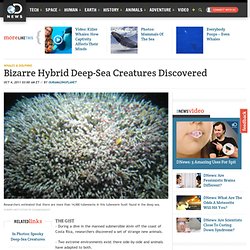

Vanessa Blais
je suis une fille de 18 ans.
Trucs et astuces pour votre chien. Apprenez à votre chien à donner la patte. YouTube. Comment apprendre à son chien de faire sa prière. Apprendre le "couché" à votre chien. Apprendre a son chien a faire le mort. Apprendre a son chien a faire le mort. Apprendre à son chien à faire le beau. YouTube. Apprendre ''fait le beau '' Apprendre à votre chien à ramper. Comment faire ramper votre chien. Apprendre le rappel à son chien. Le rappel. Apprendre à son chien à se cacher les yeux. Apprendre à son chien à se cacher les yeux avec la patte en 2 étapes simples et astucieuses. Eternuez et votre chien vous apportera un mouchoir. Eternuez et votre chien vous apportera un mouchoir. Chat qui joue à 1,2,3 soleil. Top 24 des chats qui se payent le tête de personnalités.
Chats du Monde. Top 12 des photos de chatons devenus adultes en mode « avant/après » Chaton trop mignon. Top 30 des chats à la cool qui se relaxent dans des positions étranges. Topito recrute Inscription Connexion > Mot de passe oublié ?

Se souvenir de moi C’est vendredi, c’est une connerie . Source : damncoolpictures 9423 Points Top dexter_stinson Le meilleur moyen pour que tu lises mon profil entièrement réside sans doute par un scoop au tout dé ... Bigre ... des chiens qui s’endorment dans des positions bizarres, ... Les Chatons (Bouygues Telecom) Chevaux. Haras de Pelmer - Elevage et pension pour chevaux. Etalons et Poulinage. Warmblood stallions and Horses for Sale! - Nouvelles. Accueil / Sites FFE - Portail FFE. Ecurie Le Grel élevage d' Ermac - Ecurie LE GREL. Haras du Bailly - Ecurie de Propriétaires - Le Haras. Portail Internet - Haras-nationaux. Equidia Live, Equidia Life : TV, courses hippiques PMU en direct, vidéo Quinté+, pronos, sports équestres, cheval, dressage.
Elevage du Loir - Elevage du Loir , chevaux de sport. Présentation : Les Ecuries de Vaunaval : 72800 Le Lude. Les Océans et l'eau. DORIS - Faune et flore sous-marines. Bizarre Hybrid Deep-Sea Creatures Discovered. - During a dive in the manned submersible Alvin off the coast of Costa Rica, researchers discovered a set of strange new animals. - Two extreme environments exist there side-by-side and animals have adapted to both.

Scientists have discovered a strange and rare hybrid site in the deep sea where two extreme seafloor environments exist side-by-side, and are home to a parade of weird hybrid creatures seemingly adapted to the hardships posed by both intense environments. Researchers discovered hydrothermal vents and cold methane seeps in a swath of the the deep sea off Costa Rica in 2010, and found a host of unknown species living there. ANALYSIS: Shimmer My Methane And Call Me Hydrothermal Seep Scientists made the discovery during a dive in the manned submersible Alvin to an area known as the Jaco Scar, where an underwater mountain is moving under a tectonic plate. PHOTOS: Bizarre Deep-Sea Reef Creatures Discovered The team coined the phrase "hydrothermal seep" to describe the ecosystem. Sealifecentre.com - Liste des espèces. Association Peau-Bleue - Voyages Bio Sous-Marine - Hippocampes - éco-volontariat.
Des chercheurs découvrent un "monde perdu" sous l’Antarctique. Des scientifiques britanniques ont découvert un "monde perdu" abritant de nombreuses espèces à près de 2.500 mètres de profondeur dans l’Antarctique.

C’est avec une énorme surprise que des scientifiques britanniques ont découvert ce qu’ils qualifient d’un "monde perdu", plongé dans l’obscurité, à 2.400 mètres de profondeur dans l’océan qui borde la côte Est de l’Antarctique. Publiée dans la revue PLoS Biology, l’étude réalisée révèle des résultats exceptionnels. En effet, c’est en explorant cette côte que les chercheurs ont pu observer des colonies marines d’espèces de crabes, de pieuvres et d’étoiles de mers parfaitement inconnues. Biologie marine. Baby Octopus crawling around out of water. Listening to the Deep Ocean Environment. Voici l'éponge... The harp sponge: an extraordinary new species of carnivorous sponge. Les Chroniques du Plancton. Life - Timelapse of swarming monster worms and sea stars - BBC One. Hydrothermal Vents. Underwater Experiments: Astounding Photographs of Jellyfish by Alexander Semenov. Russian biologist Alexander Semenov graduated in 2007 from Moscow State University’s zoology department where he studied invertebrate animals.

Specifically: squid brains. Now he works as the chief of his diving team at the White Sea Biological Station, camera always in-hand, where he’s captured some of these extraordinary photographs of jellyfish and other wildlife. You can see more images in his photo galleries or you can follow him on Flickr. (via lost at e minor) Eastern Emerald Elysia - Elysia chlorotica - Overview. Biology Elysia chlorotica is a “solar-powered” marine sea slug that sequesters and retains photosynthetically active chloroplasts from the algae it eats and, remarkably, has incorporated algal genes into its own genetic code.

It is emerald green in color often with small red or white markings, has a slender shape typical of members of its genus, and parapodia (lateral "wings") that fold over its body in life. This sea slug is unique among animals to possess photosynthesis-specific genes and is an extraordinary example of symbiosis between an alga and mollusc as well as a genetic chimera of these two organisms.
To obtain algal chloroplasts Elysia chlorotica slugs use their radula (tooth) to pierce a filament of the alga Vaucheria litorea and suck out its contents. The ingested algal cytoplasm and nuclei move through the gut but algal chloroplasts are trapped and concentrated in vacuoles along branches of the digestive tract. Marine Monster Mystery on S.C. Beach. A bizarre creature that washed ashore last week in Folly Beach, S.C., sparked speculation in the area and on the Internet that a dead sea monster might have been discovered.

The tan-brown animal with greenish patches was strange enough, but what really baffled beachgoers was its massive size and the dinosaur-like bony plates on its sides. It's not clear just how long it was, but photos suggest it exceeded 10 feet. Like many washed-up carcasses it carried both a salty stench and an air of mystery. Speculation ran rampant, with commenters suggesting that the creature was everything from a dinosaurian sea monster to a toxin-spawned mutation to a chupacabra. Scientists, however, were somewhat more skeptical. One of the first to identify the monster was Dr. The marine monster was in fact an Atlantic sturgeon. The South Carolina monster was only the latest of several creatures to wash ashore in recent months. This is What Happens When a Squid Listens to Cypress Hill. This just completely blew my mind.

First a minor detail: squids do not possess ears. However, the same impulses created when audio is converted to an electrical signal, like what happens inside a microphone, can actually be gently applied to tissue, in this case the dorsal side of a squid fin. Joe Hanson over on It’s OK to be Smart explains this better than I ever will. The video above comes from the team over at Backyard Brains who did some experiments at the Marine Biological Laboratory in Woods Hole, Massachusetts where a squid was hooked up to a special iPod playing Cypress Hill’s 1993 hit Insane in the Brain.